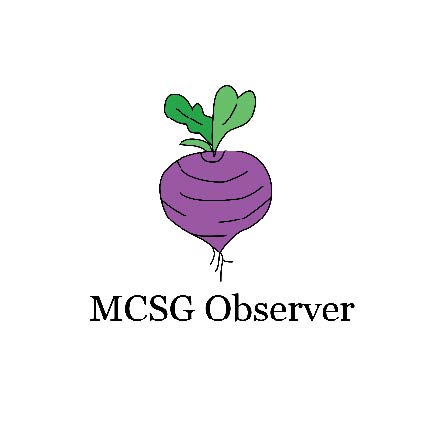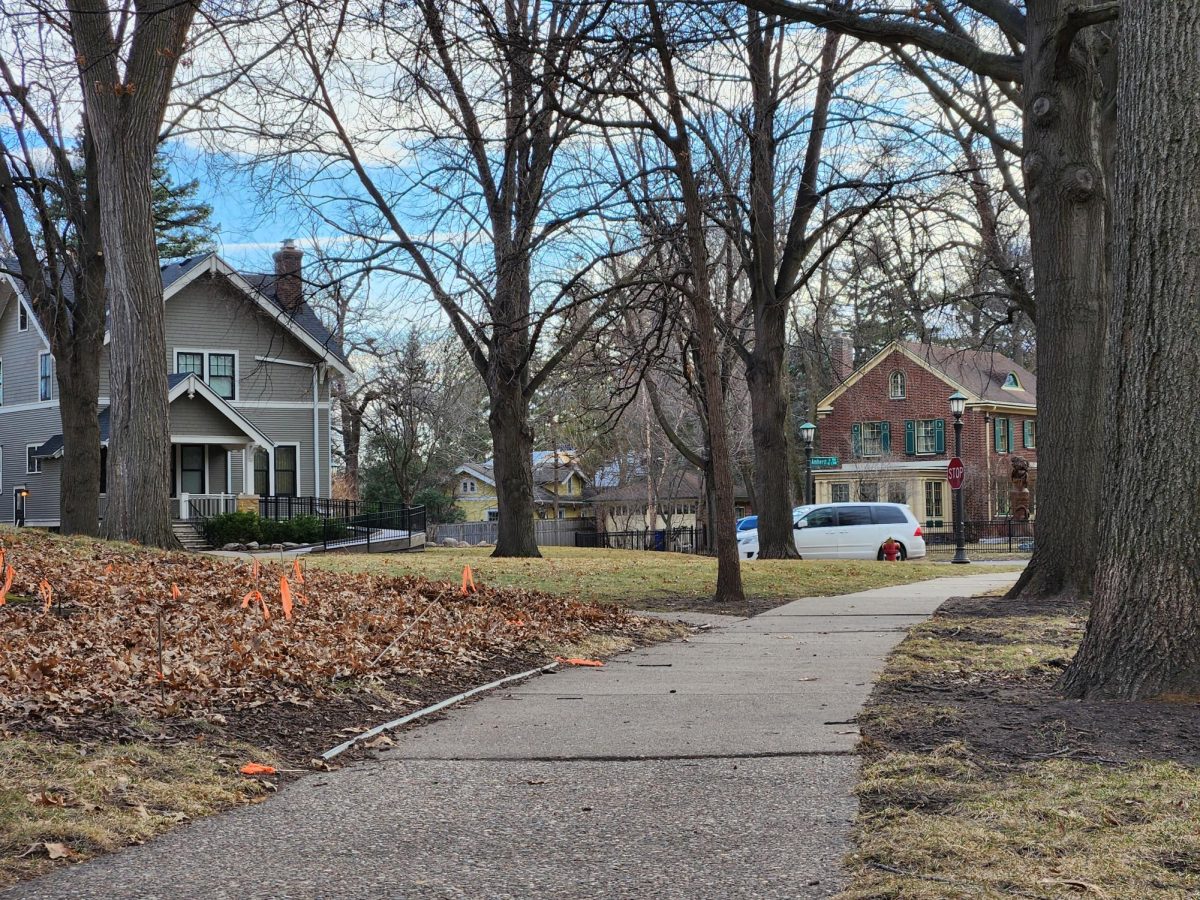The following memo, sent to students of KWOC on Monday, April 22, 2013, explains the administrative decision to maintain Macalester’s current banking relationship Wells Fargo.
Issue
In response to community concern about foreclosure and community reinvestment activity, the students of KWOC requested Macalester to sever ties with Wells Fargo.
Response
We shared with KWOC the fact that Macalester’s relationship with Wells Fargo is actually quite limited. The college’s purchasing card program has been the focus of this discussion.
After investing significant amounts of time considering your request that the college change providers for purchasing cards used for college business, we have decided to leave our current arrangement in place for reasons that are described below.
In addition, we have attached a copy of the letter that we will be sending to our account manager at Wells Fargo advising him of this outcome. In it, we encourage Wells Fargo to consider our request that they carefully evaluate their possible role in providing leadership on the mortgage foreclosure issue here and elsewhere.
Both this memo and the letter to Wells Fargo should be considered public documents to be shared with interested parties.
Process
We have taken the following steps to evaluate the request from KWOC. From the start, our process was designed to be completed before the end of the spring semester.
- Gather and review written information about the issue.
- Meet with people from the community calling for action to learn about their perspective.
- Meet with representatives from Wells Fargo who were the subject of the proposed action to learn about their perspective.
- Seek out information from people knowledgeable about the issue who are not part of the communities listed in 2 and 3 above.
The following activities were part of this process:
- We met informally with KWOC students to consider a path towards addressing their request. The first contact took place on the last day of October. At that time, David Wheaton advised the KWOC student leaders that he thought we could address this question directly as a vendor matter rather than utilizing the established Social Responsibility Committee process. This was in response to a sense that KWOC would prefer a direct review of the issue rather than using the SRC, although it was an exception to our general practices on subjects of this kind.
- In November, the KWOC students shared written information with the college’s administration, outlining various aspects of the issue.
- We proposed a process for reviewing KWOC’s request that eventually had a series of steps following the initial sharing of information. These were:
- A meeting with representatives of Wells Fargo to learn about their understanding of the issue;
- A meeting with some of KWOC’s partners to hear their view;
- And an RFI process to learn if there were actually any viable options for this particular service at other institutions.
-
The Wells Fargo meeting took place on February 26. The community meeting was scheduled for April 5 but was moved to April 17. The RFI responses led to a meeting at the Park Midway Bank branch of Sunrise Community Banks on March 28. We were pleased to have members of KWOC at each of these sessions, including the visit to Park Midway. We have, of course, had other communications at various times throughout this process. We have found all of this information gathering to be useful in evaluating the issue; we hope you have, too.
-
In addition to these steps, we have done some review of related information from other sources, including the Occupy Homes MN site and exchanges with the chief executives of two non-profit organizations with a long and distinguished history of serving people in the affected communities: Habitat for Humanity and Project for Pride in Living (PPL).
Evaluation
Our evaluation of the situation is as follows.
The roots of the mortgage crisis are complex. About a decade ago, the Bush Administration made home ownership a national priority which led financial institutions and other financial intermediaries to respond. That response was different than what had been seen in the past, particularly with respect to the aggressiveness of the sales tactics and the variety of the products offered. Some product types were poorly matched to the financial circumstances of the borrowers. Regulatory response did not help rein in questionable product offerings or business practices. The CEO of PPL put it this way:
Without a doubt the foreclosure crisis of recent years has been a huge problem, and PPL is one of the organizations on the ground responding both to the human toll and the impact on the physical quality of the housing stock in hard hit neighborhoods. I see this as a large scale, systemic failure on many fronts, involving multiple financial institutions and related businesses, government regulators and policy makers, community organizations and leaders, and the list goes on. Plenty of blame to go around in my estimation.
Wells Fargo
Wells Fargo has reported that they avoided some of the worst abuses in product design during this period. They didn’t originate some of the most toxic loan types, which probably had some negative impact on their share of the residential mortgage market. When the crisis spun out of control in 2008, Wells Fargo was pushed into the merger with Wachovia Corp, which brought some mortgage assets into their portfolio that were pretty unsavory. [In addition, they were part of the federal bailout, although we don’t think they asked for or wanted the funds.]
The range of players in this market is evidenced by the number of different financial institutions represented in the personal stories on the Occupy Homes web site. While the number of mortgages represented by those individuals is small compared to the size of the problem, the wide range of mortgage originators in the testimonials, including many from outside of Minnesota, is a reminder of how many industry participants were involved.
In conversations between the KWOC leaders and the administration and in public forums, Wells Fargo has been described by the students as the largest forecloser in the state. We have discussed the fact that no one seems to have reliable data on this subject. However, the size of Wells Fargo’s market share would suggest that it is likely.
Wells Fargo Mortgage originates some mortgages and provides servicing or acts as trustee for many more, so their activity is widespread. It’s hard to know whether Wells Fargo’s significant footprint in foreclosure action is any better or worse than other market participants and whether the impact is simply related to size. There is also no reliable data on this point. It has also been difficult to determine if Wells Fargo’s seemingly large foreclosure activity in affected neighborhoods is related to specific practices or simply to the notion that they are a larger participant in this market. Having said that, size and scale can bring the weight of responsibility.
Wells Fargo made the case that over 70 percent of their mortgages in all portfolios are owned by FNMA and FHLMC, and that it is FNMA and FHLMC that set policy regarding the handling of those assets. You have pointed out that some relief from the limitations that those organizations impose on their actions, especially regarding principal reductions, would be beneficial to hard-hit communities. What role Wells Fargo can play in making these changes is unclear. Until changes in the practices of FNMA and FHLMC are available for Minnesota loans, other strategies will have to be employed to provide relief for those homeowners.
Community partners
Our meeting with KWOC’s community partners was valuable. Representatives of Jewish Community Action, Minnesotans for a Fair Economy [Melissa Hysing ’01], and Neighborhoods Organizing for Change [Anthony Newby] were in attendance. Without trying to capture the discussion point by point, we found the information to be a useful addition to other voices in the mix. The difficulties experienced in the affected communities are real.
Some counterpoints regarding Wells Fargo’s practices were made. We covered points directly related the mortgage matter—such as lawsuits that Wells Fargo has faced in other parts of the country related to foreclosure practices—and other tangential issues—such as Wells Fargo’s tax strategies and the broader matter of securitization as a financing tool in the U.S. mortgage industry.
Separately, we reached out to two community non-profit CEO’s, and we offer their observations below. This input also influenced our analysis of the situation:
-
PPL and Wells Fargo have had a three decades long, multi-dimensional support relationship spanning many challenges and controversies in the community. They are a very strong supporter of our work. – Steve Cramer, CEO, Project for Pride in Living (PPL) [Note: In February 2013 PPL was designated as the manager of a $200,000 grant fund from Wells Fargo that helps homeowners make repairs to help them stay in their homes.]
-
Wells Fargo has contributed well over $1M to Habitat in the last four years with a special emphasis on neighborhood revitalization in North Minneapolis following the devastating tornadoes there in 2011. They have also donated many foreclosed properties to our Habitat affiliate and other affiliates around the country. In my experience Wells Fargo has been a corporation that has supported neighborhood community development for many, many years in the Twin Cities for many organizations, not just for Habitat. Our Habitat affiliate led a coalition of affordable housing organizations to support changes in the lending laws at the Minnesota legislature in 2010-2011; Wells Fargo was always at the table and helped to lead other lenders to support needed changes in our mortgage foreclosure process to provide a stronger voice for consumers in the foreclosure process at the state legislature. Our Habitat affiliate provides mortgage foreclosure prevention counseling to hundreds of clients each year who live in Minneapolis; Wells Fargo with rare exception has been a very responsible lender in responding to concerns we have raised with them on behalf of borrowers. Wells Fargo executives have served on our board and the MN President of Wells Fargo, David Kvamme, is a current Habitat Board member. I would strongly discourage Macalester from branding Wells Fargo as an outlier–there have been other lenders who were in fact very difficult to deal with as we attempted to negotiate with them on behalf of borrowers and slow to respond to the mortgage foreclosure mess in the Twin Cities. Wells Fargo owned up to the processes it needed to change and then changed them. Wells Fargo was not blameless, but they have been proactive in correcting their mistakes. –Susan Haigh, President and CEO, Twin Cities Habitat for Humanity
Sunrise Community Banks
Our discussion with Sunrise Community Banks made it clear that we would be working with US Bank if we were to move to an alternative purchasing card platform. This is because Sunrise’s p-card program is run by Elan, a wholly owned subsidiary of US Bank. When we asked the Sunrise Community Bank team about daily operations for the p-cards, the Elan representative made it clear that we would be dealing with her organization, not Sunrise. That’s a reality when large, complex organizations have needs that require sophisticated solutions.
Also to be clear, we think that Sunrise is an outstanding operation with an excellent track record of support for the Twin Cities urban communities. We are pleased to have a continuing relationship with one of their banks as a depositor for the past few years.
US Bank
We have done no research on US Bank with regard to the mortgage issue and no data was presented that relates to that organization, although our discussion in the community partners meeting strongly suggested that some of their practices may be similar to those of Wells Fargo and other banks. US Bank does appear in some of the Occupy Homes examples.
Summary
In the end, we concluded that singling out Wells Fargo and moving a small piece of the college’s banking business essentially to US Bank is not the right course of action for us. Our thinking on this has been influenced by all of the information gathered. We understand that others may look at this fact set and come to a different conclusion. That’s always possible when thoughtful people review a complex issue.
David Wheaton, VP for Administration and Finance
Kate Walker, Assistant VP for Finance














Dan Dyer • Sep 6, 2019 at 1:07 am
Good website! I truly love how it is nice on my eyes it is. I’m wondering how I could be notified whenever a new post has been made. I’ve subscribed to your feed which may do the trick? Have a great day!